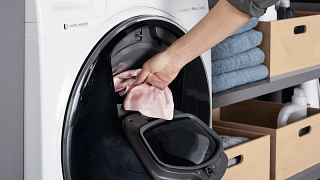Once renovations are done, you have to contend with the difficulties of furnishing. How can you minimise your spending?
Embrace the minimal life. Have nothing in your home that you do not know to be beautiful – English artist, William Morris. Buy less and buy better! Carefully curate your home. Step away from mass consumerism and strive for a richer life of engagement with your surroundings – look for pieces that carry a story you can connect to.
Here are some of the most budget-friendly ways to get a well-furnished home, without spending a fortune.
Content
- Save money on furniture
- Save money with eco-friendly household products
- Save money on groceries
- Save money with DIY home repairs
- Save money with DIY home upgrades
- How to paint door
- How to paint front metal gate
- How to remove mouldy sillicone sealant
- Save money on electricity bills
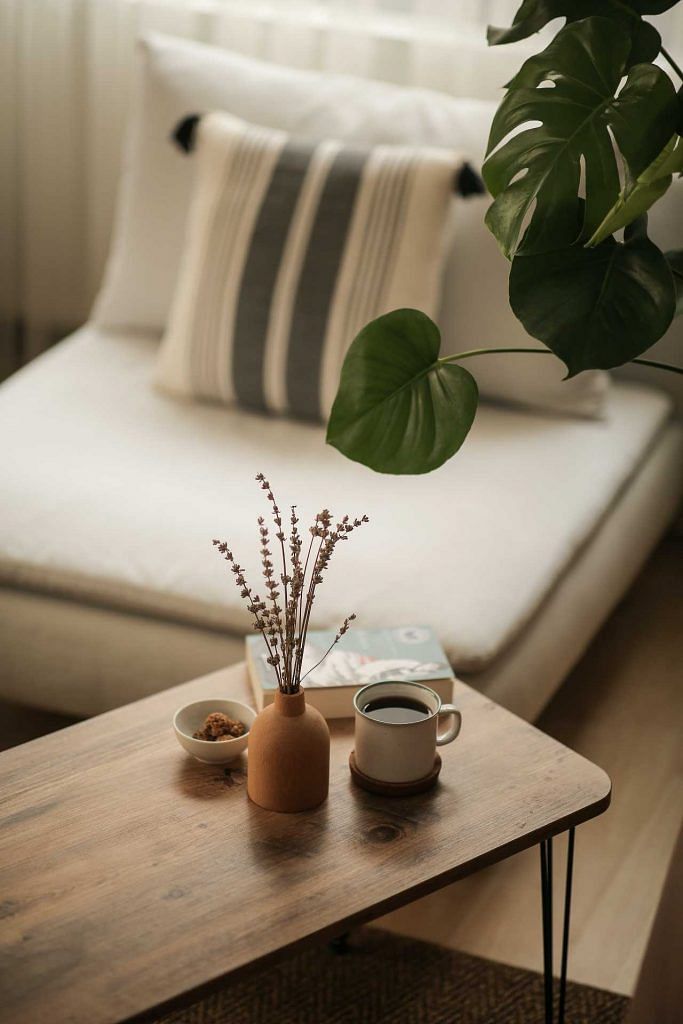
Save Money On Furniture Shopping
1. Engage a contractor directly to make furniture you want
See that gorgeous $25,000 dining table?
A lot of Singaporeans think that contractors just drill holes and lay flooring. Many of them also have their own manufacturing capability. Every home is unique, and interior designers may even call on these contractors to custom build items.
2. Ask a Foreigner or Expat Friend
The cheapest source of second-hand furniture in Singapore, hands-down, are expatriates and foreigners who are moving out. Some of them rent their apartments or houses unfurnished (families in particular like to do this), and most of the stuff in the property is their own.
Their landlord will be chasing them to clear it out, to make way for the next tenant. And due to the high cost of shipping, they seldom want to bring all the furniture home. This is your cue to swoop in, and buy everything at bargain prices.
Ask expatriates in your office, or go on expatriate forums and ask around. Odds are, someone is selling furniture on the cheap.
3. Use the Right Credit Card When Shopping
Buy the furniture through your credit cards, and then repay the credit cards immediately afterward (this way, there’s no interest rate). That’s a often repeated mantra of responsible card users.
However, fewer cardholders know to maximise their savings by picking the right credit card.
Always make a trip to check which furniture stores have the right credit card deals or promotions relevant to you. You may just make twice the reward points, as well as extra possible discounts.
4. Buy Bundle Deals or Group Buys
Stores sometimes have bundle deals, where you can buy whole sets of furniture to complete certain rooms.
Some furniture stores bundle this part of a furnishings package – for example, a store might have a deal to fully furnish your study for you, and all the items in it will come with a bulk buy discount.
Many BTO Group Buy Telegram chats also offer four to five freebies at once for group buys.
This typically shaves 10 to 15 per cent of the cost of buying items individually. The downside is that it’s a little less customisable, as you’re getting a fixed bundle (there may be the occasional chair you think looks hideous, but is part of the deal).
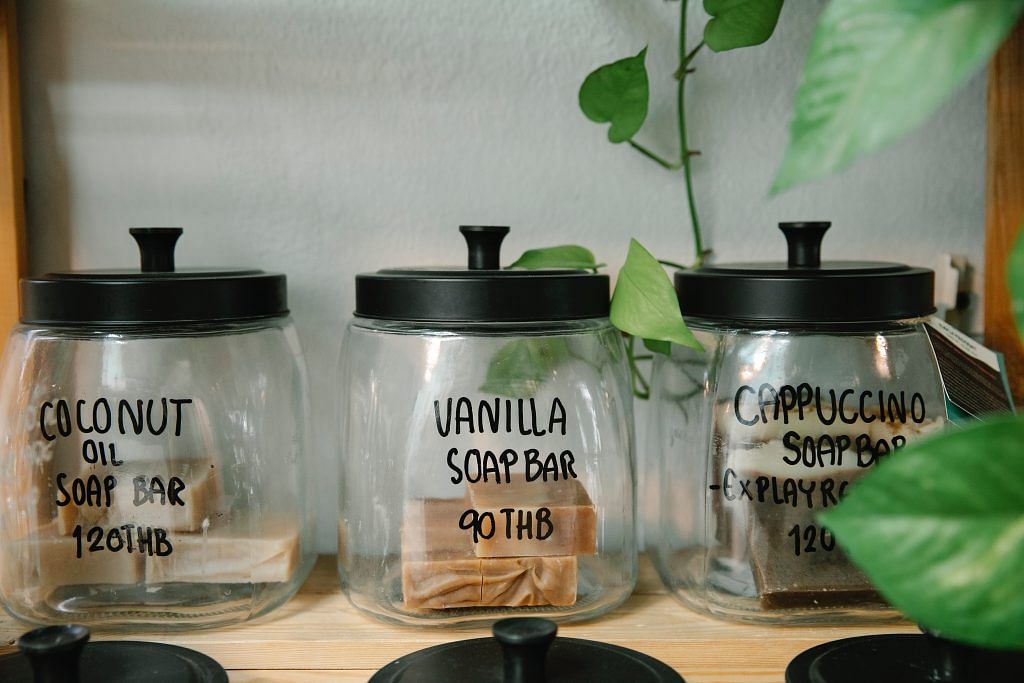
Save Money With Eco-Friendly Household Products
Sustainable living generally comes with a hefty price tag, but some products can save you money down the road. Find out where you can save on sustainable household products, and where you may need to splurge.
Sustainable living is taking centre stage as the world’s climate issues continue.
Many are undertaking this initiative at home and incorporating organic, recyclable and reusable products into their daily routine. These items may be good for the environment, but are they good for your bank account?
Read ahead to find out where you can save money in your sustainable home.

1. Go multipurpose
How many cleaning products do you have at home? All of these products are not only costly, but also fill your home with toxins!
Take the smart approach: use a natural dish soap to clean windows, tiles, bathrooms, toilets, and even to lift stains from rugs and upholstery.
Just add a drop into a bucket of warm water and you’ll have a great multipurpose cleaner. You can also try the baking soda and vinegar technique.
For sustainable laundry detergents, consider magnesium-based laundry replacements, soap nuts, or laundry bars for your next washing machine cycle.

2. Bring Your Own (BYO) Containers
An easy way to start a personal zero-waste initiative is to adopt the Bring Your Own (BYO) habit. This means bringing your own reusable bags, bottles or containers when making a purchase.
Perhaps surprisingly, these BYO efforts can actually result in savings for you when you takeaway food. For example, you may just save on the 80 cents takeaway packaging that the Sembawang hawker is charging.
Reusing a silicone food container instead of going through a box of plastic Ziploc bags each month.

Save Money on Groceries
1. Grow herbs and veggies at home
Save on your grocery bills by growing herbs at home. Spend a fun afternoon at a workshop to learn more about indoor gardening. You’ll be surprised at how easily you can grow fresh herbs, and how much money you can save. Plus, the greens add a beautiful touch to your home.
2. Shop with a groceries list
Always write down what you need to buy beforehand, either on paper or on your smartphone. Having a list keeps you from buying on impulse – you don’t end up wandering the supermarket aisles stumbling upon things you want to buy but don’t need.
3. Only shop when you’re full
When you shop on an empty stomach, your hunger can influence what you grab from the shelves. Before you know it, you might end up with bars of chocolate and packs of instant noodles you never intended to buy.

4. Use a basket, not a shopping trolley
Lugging a heavy basket around the supermarket is a pain, which is why it deters you from buying more than you need. Unless you are buying big items such as boxes of tissue, or big bottles of drinks, aim to fit all of your shopping into one basket. This helps to limit your spending.
5. Buy supermarkets’ house brands
You won’t be compromising on product quality. Supermarket house-brand items are cheaper than name-brand items not because they are inferior, but because the manufacturers save on advertising and other intermediary costs and can then pass on these savings to consumers.

6. Get NTUC Warehouse Club membership
The members-only Warehouse Club by Fairprice, located at 1 Joo Koon Circle, promises discounts of roughly 20 per cent on products that come in bulk quantities compares to what’s usually carried by supermarkets. For example, cornflakes may be sold in 1.7kg bags rather than 300g boxes.
At $30 or $50 per year for membership, you can make bulk buys in the form of value packs to save on groceries and household essentials, particularly for non-perishable goods like detergent and toilet paper.

7. Freeze your food
Reduce wastage by freezing fresh produce so it can be kept longer. Bread, raw fruits and vegetables can last up to a year, while meat can be kept for three to six months in the freezer.
Prepare meals in bulk and freeze them in portions to be reheated. For some inspiration, turn to our Food section for recipes you can cook to freeze, and reheat later on.
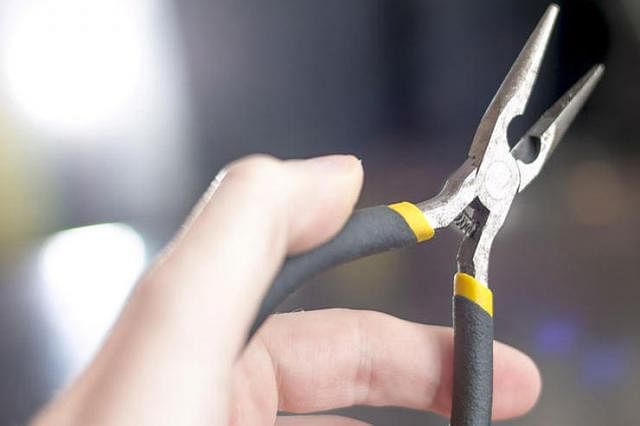
Save Money with DIY Home Repairs
1. Unclog the Shower Drain or Kitchen Sink
If your sink is backing up, it’s because there is a swamp monster inhabiting the drain – and it will only grow larger by the day.
Grab a pair of needle-nose pliers or a pipe cleaner, and gently try and pull out any hair or debris you can reach.
Is it safe to pour boiling water down the kitchen sink or drain?
Once you’ve retrieved the offending object, Kevin Pleasants, a home improvement expert and operations manager at Handy.com, suggests pouring boiling water down the drain to flush any remaining particles. However, this only works if you have steel pipes. Most Singapore HDBs have PVC pipes that will melt in contact with boiling water. Instead, use regular declogging gel that you can easily find at NTUC.
DIY Natural remedy to unclog drain pipes
If that doesn’t get things slip-sliding away, try flushing the drain with baking soda and vinegar, says Morrow. But a word of warning: Those two materials foam when mixed, so mix them directly in the sink or tub that’s having the issue.
2. Repair Windows Seals
Cracks around your windows can cause money-sucking drafts, says Morrow. On older windows, check around the sides of the glass and around any wood framing for gaps where air could be entering or escaping.
The easiest way to seal a window is to buy insulation tape. But a more permanent — albeit hands-on — solution is to use caulk sealants to do it.
Now, caulk can be a messy thing, but the more you work with it, the easier it gets.
First, tape off either edge of the area you’re going to be caulking (like you’d tape off the edges of trim when painting). Then, run your caulk gun down the crack. Finally, use your finger to smooth down the bead, then pull off the tape.
The finished product will look like a professional did it.
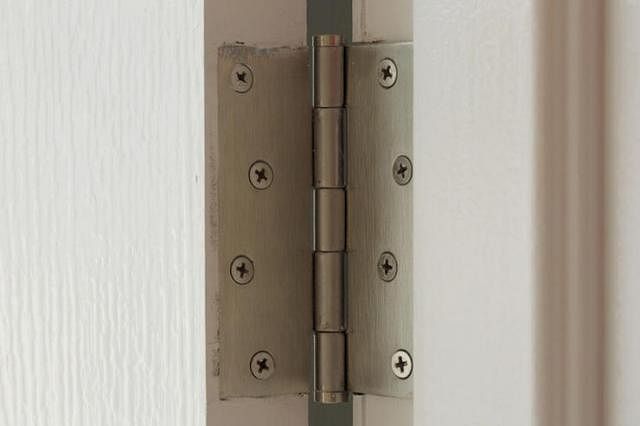
3. Oil a Squeaky Door
The issue here is the hinge pins, not the door itself, says Pleasants.
It’s an easy fix: “Use a hammer and nail to tap out the pins from the hinge, give them a thorough cleaning with a damp cloth, and then rub the whole pin with your chosen lubricant,” he says.
One important cautionary note: Remove those pins one at a time — otherwise, your door will fly off its hinges. Slip the pins back in and your doors will be silent once again.

4. Fix A Leaky Faucet
The culprit for most leaky faucets is a loose washer, says Pleasants. First, turn off your water. Generally, there’s a lever under your sink that you can switch off.
Then, remove any external parts. With fancy, newer sinks, this can be the most difficult part.
“You’ll see a nut or screw that probably just needs tightening, but unscrew it and take a look at the washer. If it looks worn and like it needs replacing, just pick a new one up at your local hardware store — most are just standard size, but take the old one with you to be on the safe side,” says Pleasants.
Replace everything, screw it all down tightly, and return the valve to the open position.

Save Money with DIY Home Upgrades
Many households would love to refresh their home but don’t have the time or budget for a full scale renovation. However, with a little creativity and resourcefulness, a DIY (do-it-yourself) upgrade is possible.
To help get you started, we’ve identified a few budget-friendly ways to spruce up your home without cumbersome renovation, exorbitant expenses or a messy aftermath.
1. Fix Wall Cracks with Wall Putty
Cracks, chipped surfaces and uneven edges are common sights in many homes. They are unsightly and can even dampen the value of the property, should you be showing it to potential buyers.
Fortunately, fixing a slightly damaged wall can be relatively easy to do yourself. For example, wall putty can conceal damaged parts of the wall and restore the surface to create a new and smooth appearance. Additionally, wall putties are inexpensive.
A tub of ready-to-use wall putty typically costs about $7 per kilogram. If you need to scrape the edges of the cracked wall before applying the putty, a wall scraper can cost as little as $3.

2. Fresh Coat of Wall Paint
The colour of your walls is a great medium for creating the desired style, mood and ambience in your place. A new coat of paint can instantly transform the aesthetic quality of a home and even increase the value of a property.
Additionally, this DIY project is made easier with paint delivery services.
These companies allow you to order the paints of your choice at the comfort of your own home and have them delivered to your doorstep, eliminating the laborious chore of lugging the heavy cans home by yourself.
How to paint your own door
If you want your paint job to last longer, and have that clean professional finish, make sure you prep the surface properly. The painting process might need more than a day, even for a door, so give yourself enough time to finish the job.
Follow these steps, as advised by Kitty Tan of Nippon Paint.
Clean Door Thoroughly
First, you will need to clean the surface thoroughly, removing any dust, dirt or matter on the surface. Sand the door lightly with sandpaper to remove any loose paint, and to even out the surface.
Sanding it will also help the new coat of paint adhere better. Clean the door with a damp cloth and leave it to dry completely.
Protect Your Floor & Furniture
Before painting, make sure you protect your floor with a drop sheet to catch any drips!
Paint Undercoat First
Apply an undercoat, which will ensure your topcoat goes on smoothly and look more even. Look for water-based paints such as the Nippon Paint Aqua Bodelac undercoat and acrylic gloss enamel topcoat, which is low-odour, and low in Volatile Organic Compounds (VOCs) as compared with regular oil-based formulas. This paint is also specially formulated for doors.
Paint Topcoat
When the undercoat is dry (two hours for water-based paint and one day for oil-based paint), apply the first layer of your topcoat paint and wait for that to dry (three hours for water-based paint and one day for oil-based paint) before applying the second layer of paint. Leave it to dry completely.
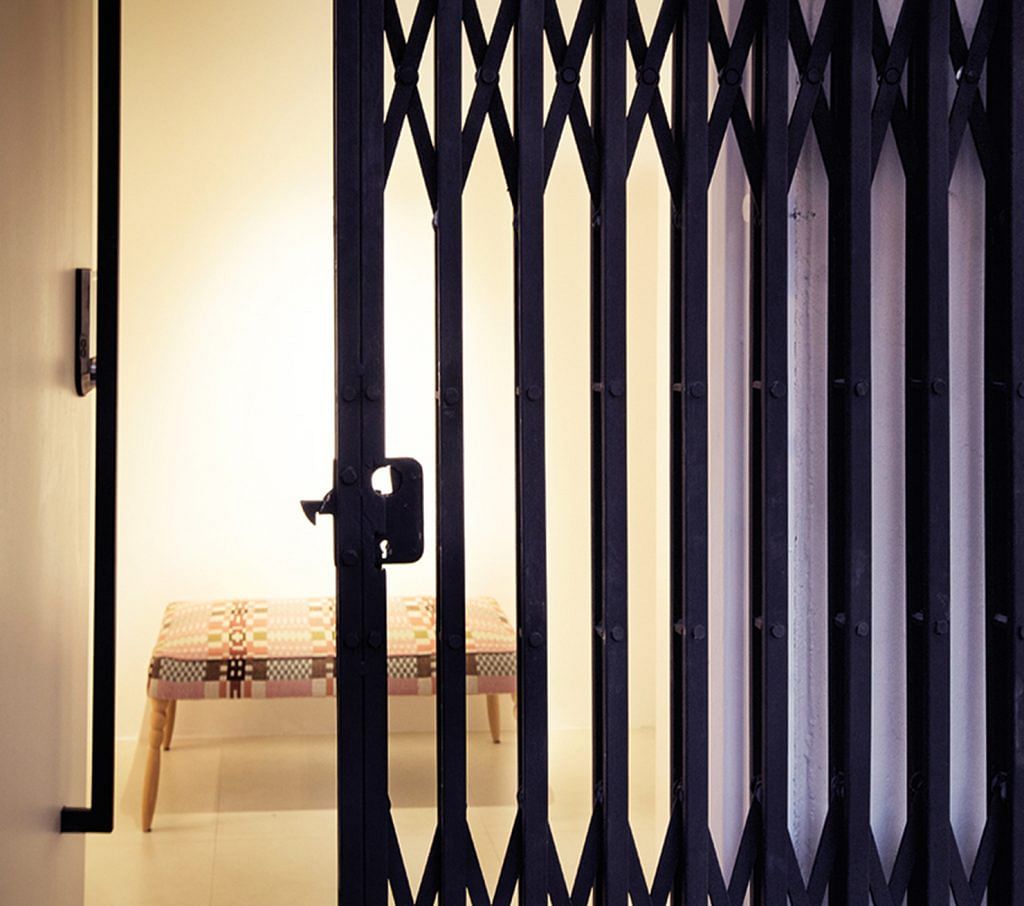
How to paint your metal front gate
In the case of metal gates, you do not need to scrape off the old paint unless the current paintwork is badly peeling.
For a smooth and long-lasting paint job, remove all loose paint, dirt and grease from the surface, then sand it lightly and dust clean, says a Dulux spokesman.
Rough surfaces help the paint stay on longer. If the metal is rusty, apply a zinc-chromate primer, a corrosion-resistant agent.
For a healthier working environment, apply a coat of Dulux Waterbased Gloss primer – a low-odour, environmentally friendly product – followed by two coats of paint such as the Dulux Water-based Gloss, which is low in volatile organic compounds and fast-drying.

3. Paint Your Own Artwork & Decor
Like a fresh coat of paint, art decor can create great visual sensations, cover up old, dirty walls and even uplift moods in a room. Decorating with artwork is an ideal way to revamp the look of a home.
Additionally, it allows homeowners to personalise their space with carefully selected pieces that match their aesthetic values, emotions and even aspirations. If you prefer high quality art pieces, at a relatively inexpensive price, visiting the annual Affordable Art Fair will present you with an extensive selection from international artists.
Alternatively, there are many decorative art suppliers in Singapore that offer a wide range of framed pieces for as little as $20 to $30. These stores, such as Nook and Cranny and Ikea make updating your flat with some new art easy and inexpensive.
4. Buy secondhand furniture
Draw inspiration from interior design magazines and think about how you can recreate the looks in your home for less.
For example, a new coat of paint can transform an old piece of furniture. Check out Hock Siong & Co for some great, inexpensive second-hand finds.
With a little imagination, you can create beautiful decor pieces for a fraction of the cost.
5. Re-Grout Tile Flooring and Wall Tiles
Ripping out the tiles of your floor or wall and replacing them with new ones can be an extremely expensive and cumbersome affair. Not only will you have to pay for a contractor, the hacking and re-tiling process can also disrupt the daily routine in your home.
A low cost alternative to tiling is to re-grout the old and dirty gaps in between the tiles. Re-grouting is an easy task, but it does take time and the right materials to simplify the process.
However, the cost savings are significant. For example, hiring a re-grouting contractor to overhaul a bathroom floor can cost $350 to $700. On the other hand, a tub of ready-to-use grout to re-grout the same area costs less than $20 and can help you give your existing floors or walls a new look.
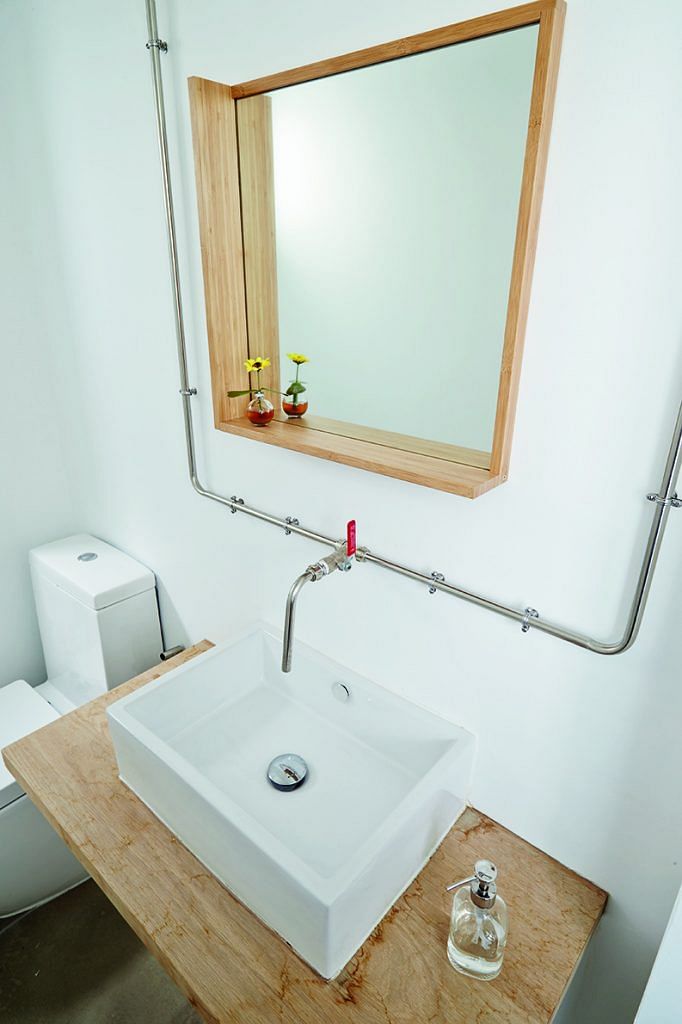
6. Replace Mouldy Silicone Grout
In muggy Singapore, mould can be a recurring problem in wet areas such as the bathroom. If the problem persists in your bathroom and kitchen, try to prevent mould from forming by wiping wet surfaces dry after use. You can also install a ventilation fan, and use good quality wet- area silicone sealant.
With home-maintenance products easily available in DIY shops, you can try removing and replacing the mouldy silicone sealant yourself.
How to Replace Mouldy Silicone Sealant
We got an expert from Home-Fix to guide us through the steps, but first, get these items ready. You can get them all from Home Fix:
- Sharp blade
- Scraper
- Caulking gun
- Wet-area silicone sealant
- Rags
- Methylated spirits
- Masking tape
Remove the mouldy silicone grouting and pull it off the sink using a sharp blade. Scrape off the remaining grout and clean the area thoroughly with methylated spirits.
Tape the surrounding area to ensure neat application, and load the silicone sealant into the caulking gun. Cut the tip of the gun nozzle at a 45-degree angle and apply the sealant at the same angle. Dip your finger in methylated spirit and smoothen the joint from one end to the other.
When done, clean up any sealant that has spilled over onto the masking tape. Allow the silicone sealant to dry for at least 24 hours, and make sure that it is dry before using the sink again.
It may take up to 72 hours for the sealant to be fully cured, so minimise usage of the sink during this period.
Alternatively, you can contact Home-Fix or a handyman to carry out the job for you.
7. Cover Old Flooring with Carpet
If you’re tight on time and money, your options are a bit more limited. However, if you want to change the atmosphere in a room you might want to consider purchasing a new carpet.
For instance, a rug can hide older flooring and instantly transform the theme of the entire apartment. You might choose a Persian-styled carpet for a sophisticated look, or one with abstract patterns to give your apartment a more creative twist.
Most importantly, you are able to choose one that suits your taste.
Depending on the style and design, reasonably priced carpets and rugs can be found in furniture stores such as Courts, Harvey Norman and Ikea.
For low-cost carpets, shopping online can help you find good deals. Our research suggests you can pay as little $10 to $15 for a carpet on sites like Lazada.
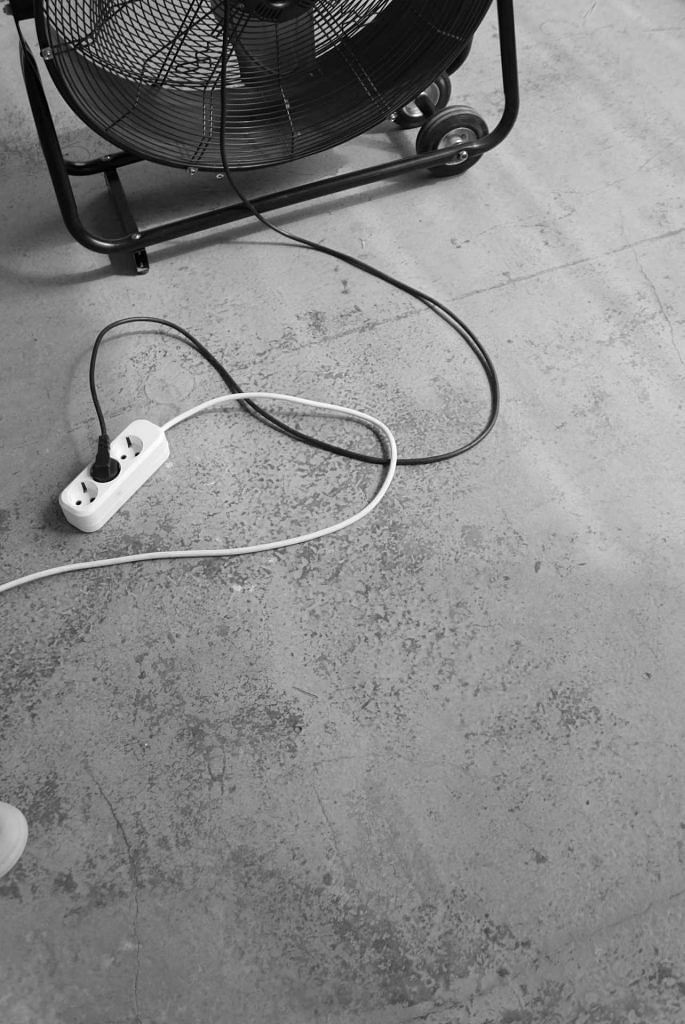
Save Money on Electricity Bills
Cost of living in Singapore is rising and it’s not just your neighbourhood chicken rice stall. Turning on your air-conditioner to beat a hot day now costs more than it did three months ago.
Electricity prices have been increasing steadily this year. Unfortunately, electricity tariffs are partly pegged to global oil prices, which in turn are tied to fluctuating market conditions, and thus are beyond our control.
Here are some tips to save electricity from Stefano Boscaglia, Senior Vice President, SME and Consumer Sales, Senoko Energy.
1. Change your electricity plan
If you’re still on the government’s SP Group electricity plan, know that the Open Electricity Market has been in force successfully for years. You get to choose from a wide range of electricity plans that may be cheaper than SP Group’s.
If you prefer certainty, choose plans with fixed prices, so you don’t have to worry about the cost of your electricity for the next two years.
Risk-averse? Consider a Discount Off Tariff (DOT) plan – this offers a guaranteed discount, so you get consistent savings despite fluctuations in regulated tariff rate.
All price plans are inclusive of the Transmission Loss Factor charges (electricity that’s lost along the way to your house).
If you’re cautious and want the option of switching providers after a few months, choose a shorter contract. If you prefer a fuss-free experience and want to lock in a discount rate in the long run, a longer-term contract will save you some hassle.
To further stretch your dollar, look out for extra benefits – for example, credit card rebates on your electricity bills.
2. Use energy-efficient home appliances
Pay attention to the energy efficiency rating ticks on the energy label of your product model – the more ticks, the better! Investing in an energy-efficient 4-tick air conditioner can save you as much as $420 more than a 1-tick air conditioner.
Be also sure to regularly service or clean appliances such as refrigerators, ovens and dryers so they run as efficiently as possible.

3. Switch it off
Challenge yourself to lower your electricity bill. Take note of last month’s bill and write it down somewhere obvious. Every day, think about your goal and make a habit of turning off the lights when no one’s in the room. You’ll be looking forward to next month’s bill.
Switch off appliances from the power socket when not in use. Electronic appliances on standby could account for 10 per cent of the average household electricity bill.
This article first appeared on Singsaver, ValueChampion.














